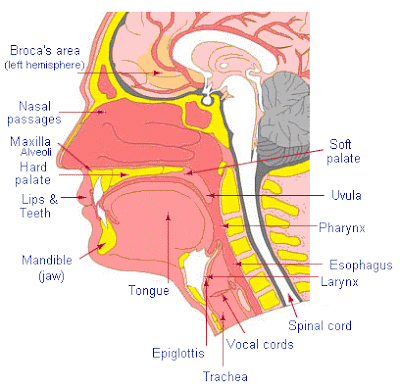2008年1月17日 星期四
土耳其歌曲
A B C Ç D E F G Ğ H I İ J K
a be je che de e fe ge yumushak-ge he i jje ke
L M N O Ö P R S Ş T U Ü V Y Z
le me ne o oe pe re se she te u yu ve ye ze
拼音方式
1.怎麼拼就怎麼念,母音沒有變音
2.重音多在最後一個音節
kurban (哭ㄦ棒) 牲品
çiçek (區卻k) 花
liman (里慢) 港口
can kırıkları (將 可熱K喇熱) 靈魂的碎片
文法簡介
1.土耳其文為一膠合語言,格位、時態、人稱、數量(沒有性別)都黏在詞的後面。
2.重視母音的諧聲。
3.多為SOV的句型,但可視為一pro-drop語言。
名詞修補
kitap kita-b-ım kitabım
書 書-(軟化)-我的 我的書
動詞時態
almak al-ı-yor-du-m alıyordum
拿 詞根-墊音-現在式-過去式-我 我剛剛在拿
動詞複合
ölmek öl-dür-t-ül-dü-y-müş
死 詞根-使役-再使役-被動-過去-墊音-傳說-(他)
öldürtüldüymüş 他是被A叫B給殺死的!
Ela gözlerine kurban olduğum
歌詞
Ela gözlerine kurban olduğum
Yüzüne bakmaya doyamadım ben
İbret için gelmiş derler cihana
Noktadır benlerin sayamadım ben
Ayamadım ben, doyamadım ben
Noktadır benlerin sayamadım ben
Aşkın ateşidir sinemi yakan
Lütfuna erermiş cevrini çeken
Kolların boynuma dolanmış iken
Seni sevmelere kıyamadım ben
Ayamadım ben, doyamadım ben
Seni sevmelere kıyamadım ben
Can kırıkları (from youtube)
歌詞
Bu kalabalığın içinde 這擁擠人潮中
Yapayalnız hissetmektense 感受孤單
Dünyanın bir ucunda 在世界的一角
Tek başımayım 就我一個
Kir göstermeyen renkleriniz 你無瑕的色彩
Sizin olsun korkmaktansa 不怕擁有
Bulanıklığın tam içinde 在渾沌的中心
Bir başımayım 我一個人
Benim belki de 或許我也有
Gizli bir bildiğim var 一位陌生的密友
Elbette ağlarım 我當然會哭
Benim can kırıklarım var 因我靈魂碎裂
Senin gördüğün 你所看到
Yanağımdan süzülenler 從我臉頰滑落的
Asıl içimde 實則心中
İçimde yüzdüğüm bir deniz var 心中有片游過的海洋
唐努烏梁海

唐努烏梁海原來是外蒙古的一部份,但於外蒙古獨立之時,被蘇聯侵吞。現時唐努烏梁海仍然是俄羅斯聯邦的一部份,被併入西伯利亞聯邦管區。它地處外蒙古西北部、西伯利亞以南,北靠薩彥嶺,南抵唐努山,是位於兩山之間的狹長地帶,總面積約17萬平方公里。
根據資料稱,圖瓦人目前占該地人口的77%。圖瓦人係蒙古族的一支,明代稱兀良哈人,後來遷徙至唐努烏梁海地區,改稱為圖瓦或土瓦人。另一種觀點認為,圖瓦人屬於突厥人的一支,證據包括圖瓦語被公認屬於突厥語族而非蒙古語族。
唐努烏梁海被前蘇聯侵吞之後個瓜分為三個部分:俄羅斯聯邦的圖瓦共和國,圖瓦共和國以西屬於阿爾泰共和國的部份,以及蒙古的庫蘇古爾省。但由於後兩部分事實上已沒有了唐努烏梁海的痕跡,因此,通常所指的唐努烏梁海地區實質上是俄羅斯聯邦圖瓦共和國。
Throat-Singers of Tuva--Huun-Huur-Tu

(按圖片連結至Huun-Huur-Tu.com)
網站中有許多影片連結(另外提供三個連結與大家分享:1 2 3)以及相關的介紹,各位也可到網站中friends and links的SteveSklar的網站(khoomei.com)參觀。
「呼麥(khöömei/xöömei)」教學
此部落格(簡體)的文章除了介紹Tuva傳統(喉音)唱腔的類別外,也提供了明確的練習方式,讓有興趣的人可以自行在家嘗試。
2008年1月4日 星期五
The Biological Bases of Speech Production (3)
In our daily life, we are aware of the existence of accent, especially when having a conversation with foreigners from other countries. For example, we can identify a person whether his is from China or Taiwan by the pronunciation of words with retroflex sounds.
The first website below is a phonetic database of different language speakers reading the same article. The other is a clip about one man who can imitate about 100 people’s voice, which shows that every people has different way of speaking and, of course, different voice quality.
The speech accent archive (QuickTime required)
The Man of Another 100 Voices
In some special cases, people starts to speak with another voice and tone, like he or she is possesed by some demon. In fact, it's your brain again. Visit these websites below to get further information.
Foreign Accent Syndrome
Possession? No, brain damage
The Biological Bases of Speech Production (2)
A. Vocal cord mechanism
The first website
Vocal tract visualization laboratory
The next two are about some vocal tract models which can make voice as human voice.
Vocal tract quartet (artificial vocal tract model)
Vocal tract model synthesis (experiment clip)
The last two clips show the vocal cord vibration.
Inside the Voice (voice box's self-introduction)
Vocal vibration (female singer)
B. Speech organs introduction
Diagram of the organs of speech
Speech organs location
click on the picture to visit the original page!
▲ brain (quoted from Medem)
Lips (labial)
Teeth (dental)
Tongue
Alveolar
Palate (palatal)
Velum (velar)
Uvula (uvular)
Glottis (glottal)
sounds by IPA-UCLA
The Biological Bases of Speech Production (1)
First, let's try to read out the WORDS below as fast as you can.
紅 藍 黃 白 綠 藍 紅 白 黃
Now, try this one below:
藍 白 綠 紅 藍 黃 白 綠 紅
How is your reading of the first string? How is that about reading the latter one? I know that you felt confused while reading the second one and it seems to be hard to read it right and fast as you do the first one. Why? We may say that our brains are fooled by the colors of each word especially when they are not match to the word's meaning. It shows some connections between reading and speaking and also some independencies. What about other senses we have? Let's visit the website below to discover.
http://www.eng.mu.edu/rehab/Rehab167/Mod2/hearing/
The pictures below can help you to understand the location of each organs mentioned in the website.
 ▲ anatomy of the vocal tract (from PATTS)
▲ anatomy of the vocal tract (from PATTS) ▲ ear diagram (from The Stanford Health Library)
▲ ear diagram (from The Stanford Health Library)It seems like hearing and speaking are too relative to be apart, but some people are born with hearing loss and still can speak like speaking people. Now, we will get to know about hearing loss, and how do deaf people learn to speak.
2008年1月1日 星期二
The Biological Bases of Speech Production (0)
Dogs and cats in the house, horses and sheep in the barn, whales and dolphins in the ocean, even insects in the forest, all of these creatures can make distinct sounds (including some ultrasounds which cannot be heard by human), and some of them can imitate human voice and even give a great interaction, watch the clip below and give this smart fowl fellow a big hand!
So, how about we humans? Are we competent enough to bit the bird?
Let's see the limitation of human voice:
Georgia Brown-Brazilian singer (see whistle register)
Basso profundo-the lowest note
Dean Frenkel (harmonical singer)
So far, we are only aware of the pitches that human beings can make, in the next section, we are going to think about the connections between auditory and speech mechanisms, and see how brain works when we are talking. And in section 2 we will try to discover how the vocal tract works to produce speaking voices. In the last section, we are going to focus on the accent of speech, and discuss the cause.
